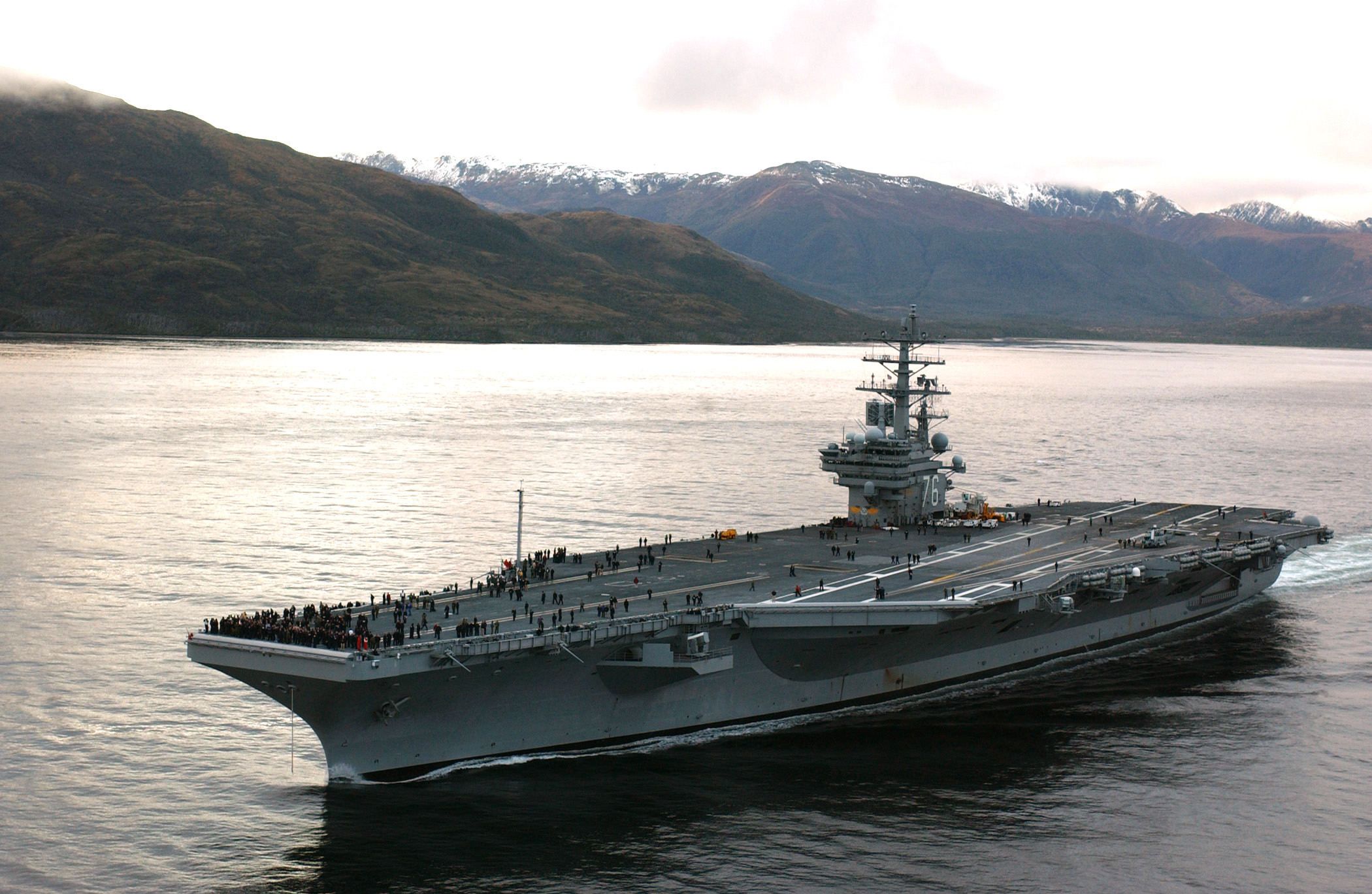As global attention remains fixated on the arrival of a US aircraft carrier in the eastern Mediterranean amid the Israel-Hamas conflict, another significant development unfolded on October 12 when a nuclear-powered aircraft carrier docked at the naval base in Busan, South Korea.
The Dome Is Doomed? Three Reasons Why Israel’s ‘Mighty’ Iron Dome ‘Fell Apart’ To Cheap Hamas Rockets
On October 10, the Gerald R. Ford Carrier Strike Group, a formidable fleet of six warships led by the United States Navy’s largest and most cutting-edge nuclear aircraft carrier, arrived in the eastern Mediterranean Sea.
This deployment is crucial to the United States’ response to the recent Hamas attack on Israel. However, US authorities are currently contemplating the possibility of deploying an additional aircraft carrier to the area.
According to multiple reports, the USS Dwight D. Eisenhower could be sent to the eastern Mediterranean, which would result in deploying a second US aircraft carrier to the region, as hostilities persist between Israeli forces and Hamas militants.
The Eisenhower and its accompanying ships and aircraft within its strike group are slated to leave Norfolk, Virginia, this week as part of a long-standing plan to deploy and conduct operations near Europe.
The upcoming deployment, which marks Eisenhower’s first in over two years, falls under the jurisdiction of the US European Command and is aimed at bolstering surveillance efforts and collaborative operations with NATO allies and partner nations.
According to the Navy Times, “US Navy carriers have been deployed to the 6th Fleet since shortly after Russia invaded Ukraine, so having two in the region allows the US to continue its naval response to Russian aggression while also remaining near the Gaza Strip, where the attack on Israel was launched.”

While the dispatch of a second aircraft carrier group to the eastern Mediterranean region by the US remains unconfirmed, a senior US military official underlined that the deployment of the Gerald R. Ford Carrier Strike Group is a strong deterrence message meant to discourage any party harboring hostile intentions toward Israel from taking advantage of the present circumstances.
Actions of this nature are frequently interpreted as displays of military strength, conveying clear messages to potential adversaries. In March 2020, during heightened tension with Iran, the Pentagon deployed two aircraft carriers to the Middle East.
The USS Dwight D. Eisenhower and the USS Harry S. Truman were then stationed in the Arabian Sea. Therefore, should the US decide to reposition the Eisenhower near Israel, it would demonstrate US naval power in the region.
This move could offer logistical and humanitarian assistance and simultaneously unsettle adversarial forces.
US Aircraft Carrier Arrives In South Korea
In addition to these developments, the USS Ronald Reagan aircraft carrier docked at the southeastern port of Busan on October 12 after participating in trilateral naval exercises with South Korea and Japan.
This move is likely intended to display collective strength and a message to North Korea and China.
Carrier Strike Group 5, consisting of the aircraft carrier and the Aegis-equipped USS Shoup destroyer and other accompanying warships, has moored at the naval base in Busan, located 320 kilometers southeast of Seoul, for a five-day visit.
The US carrier strike group recently participated in a trilateral naval exercise alongside South Korean and Japanese warships.
This joint exercise took place in international waters located southeast of South Korea’s southern resort island of Jeju. Notably, this event marked the first trilateral exercise since 2016, underscoring the evolving dynamics in the region.

The USS Ronald Reagan’s last visit to South Korea occurred in September 2022, marking its return to South Korean waters after an absence of approximately four years.
Nonetheless, the latest visit to South Korea is the second instance of a US aircraft carrier docking at the nation’s ports this year, following the USS Nimitz’s arrival in Busan in March for joint naval exercises with South Korea.
During its visit to South Korea, the US carrier strike group plans to actively engage in friendly exchanges with the South Korean Navy, fostering closer ties and cooperative relationships between the two nations to pursue regional stability and peace.
However, this visit occurred against escalating tensions on the Korean Peninsula, primarily due to North Korea’s recent revelation of a new “tactical nuclear attack” submarine, which has garnered international attention and concern.
North Korea has further heightened tensions by pledging to launch a military spy satellite later this month, following two unsuccessful attempts earlier in the year.
Moreover, the Chinese military has been assertively carrying out military exercises in the region, sparking concerns among allies about the potential outbreak of a conflict shortly.
In light of these regional challenges, South Korea’s defense ministry has stated that the carrier strike group’s visit aligns with the US’s commitment to further enhancing its strategic assets’ “regular visibility” on the peninsula.
This commitment stems from the principles outlined in the Washington Declaration, a significant agreement issued by leaders in April of this year. The declaration reaffirmed the mutual commitment to strengthen the partnership and security in the region.
- Contact the author at ashishmichel(at)gmail.com
- Follow EurAsian Times on Google News




